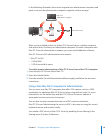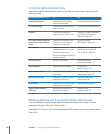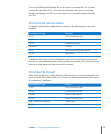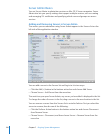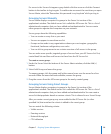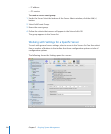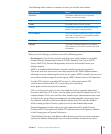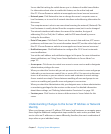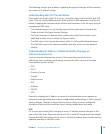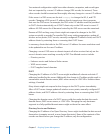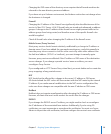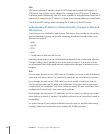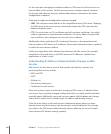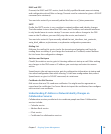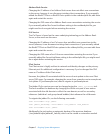
Chapter 7 Ongoing System Management 133
The following sections give guidance regarding the types of changes will be necessary
for a name or IP address change.
Understanding Mac OS X Server Names
Three names are used by Mac OS X Server: computer name, local hostname, and DNS
name. They are used by dierent parts of the system for dierent reasons, and are not
linked. Changing the computer name and the local hostname is not the same thing as
changing the DNS name.
The computer name is a user-friendly name for the system and is shown in the Â
Finder and tools like Apple Remote Desktop.
The local hostname is a domain name, usable only on the local network, and is Â
published to other services which are Bonjour-aware.
The DNS name is the Internet host name, which is a fully qualied domain name. Â
Only the DNS name is the Internet-routable name that services use for network
identity.
Understanding IP Address or Network Identity Changes on
Infrastructure Services
Some services are infrastructure services. This means they provide the basic
addressing, name resolution, and routing necessary for other services to function.
Infrastructure services include:
DNS Â
DHCP Â
Directory Service Â
Firewall Â
Mobile Access Â
NAT Â
NetBoot Â
RADIUS Â
VPN Â
Generally, changing the IP address or name of an infrastructure server requires an
intimate knowledge of the new network conguration and topology as well as manual
setting changes. Changes to these infrastructure services can cause widespread
disruption of other services until the correct setting modications are made.
DNS
For a server not hosting DNS, changing a server’s IP address requires changes to the
data in the DNS server. Minimally, the server’s NS, A, and PTR records must be changed.
Because the DNS information for the server is hosted elsewhere, those records must be
updated manually on the DNS server.



